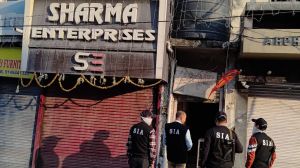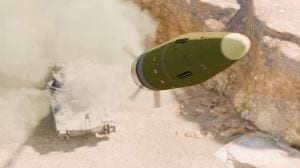Saffron surge discolours red in CPI’s birthplace Kanpur
KANPUR, Jan 25: The flag is still held high. Only it's saffron, not red!'' taunts Pandit Ram Prakash, an activist of the Bharatiya Mazdoor...

KANPUR, Jan 25: “The flag is still held high. Only it’s saffron, not red!” taunts Pandit Ram Prakash, an activist of the Bharatiya Mazdoor Sangh — the trade union front of the Bharatiya Janata Party.
And not without justification. For the BJP’s saffron brigade has trounced CPM’s firebrand trade unionist Subhashini Ali in the last two Lok Sabha elections here.
These were no fluke victories. BJP’s Jagatvir Singh Dron increased his vote share in this working class-dominated parliamentary constituency from 48 per cent in 1991 to over 52 per cent in 1996.
In an industrial metropolis which witnessed the birth of the Communist Party of India after the Cawnpore Bolshevik Conspiracy case in 1924 and sent Left-supported trade union leaders to Lok Sabha till mid-1970’s, this signifies a major change.
“Or a counter revolution,” as sociologist KN Sharma puts it. “Divisive political struggles along caste and community lines have exposed the myth that the workers constitute a class in themselves.”
What is happening in Kanpur is not unique.
There was a time when all Lok Sabha seats in Calcutta used to go to the Left. Bombay elected SA Dange and PA Rangnekar. Left supported trade union leaders like SM Bannerjee (Kanpur) and AK Roy (Dhanbad) ruled over their political fiefdoms for over a decade.
Today, the Left has been wiped out in almost all the 20 major urban and industrial belts in the country. And the one colour splattered all round is saffron — or its shades.
Kanpur, in a way, tells the story of how and why? Industrial workers still account for one-fourth of its earning population. The city has a history of militant trade unionism and a strong communist presence in the political arena.
Kanpur Mazdoor Sabha, formed by Congressmen and subsequently invaded and taken over by the Communists, led a series of major strikes in Kanpur in 1930’s and 40’s. Ganesh Shankar Vidyarthi and Hariharnath Shastri (Congress) were among its early leaders and Shastri later became the first member of Lok Sabha in 1952.
Kanpur’s second MP, SM Bannerjee — an Independent supported by Left — was also a trade unionist. He won successive Lok Sabha elections from 1957 to 1971 even though he was no son of the soil.
“We sent a Bengali from Orissa to Delhi four times. We sent a Christian from Punjab and a Sikh trade unionist with a Muslim name (Sant Singh Yusuf) to Lucknow as our representative,” recalls Shyam Mishra, himself a veteran of many an electoral battle.
By the end of the ’70s, things had started changing. Kanpur Lok Sabha seat’s 1977 winner Manohar Lal was only nominally a trade union leader.
Politically, he represented Chaudhary Charan Singh’s rebellion against Brahman Bania raj. He also owed his victory to the near total alienation of Muslims from the Congress following the Emergency.





- 01
- 02
- 03
- 04
- 05


























